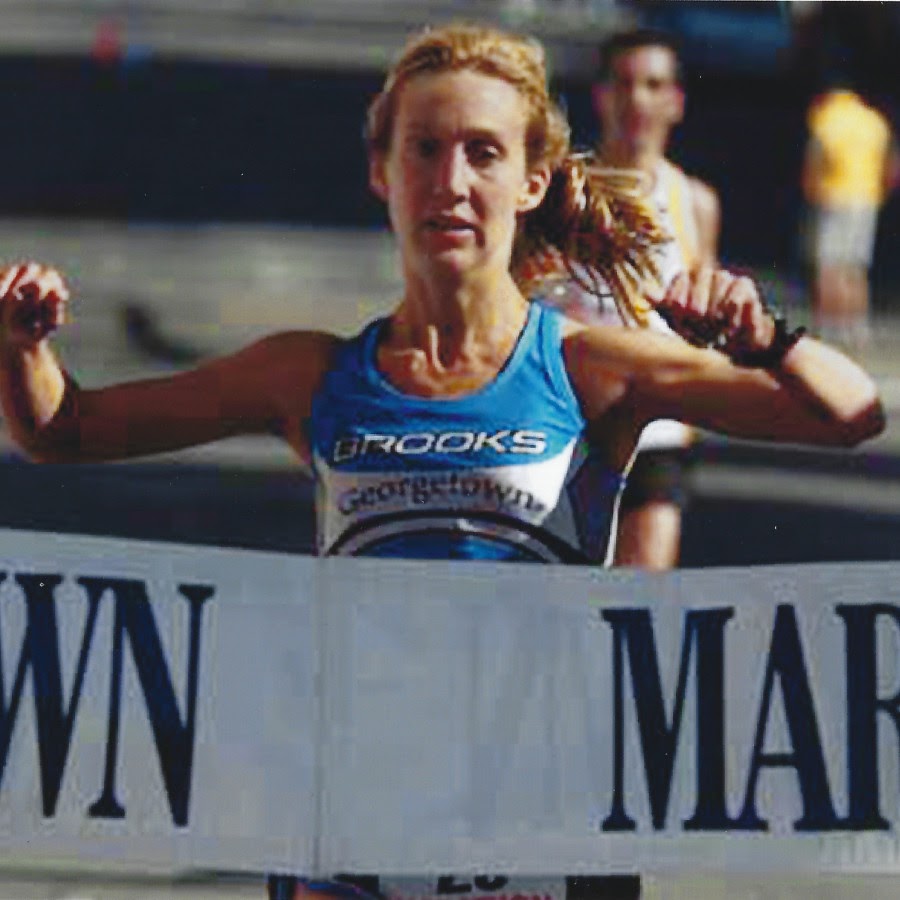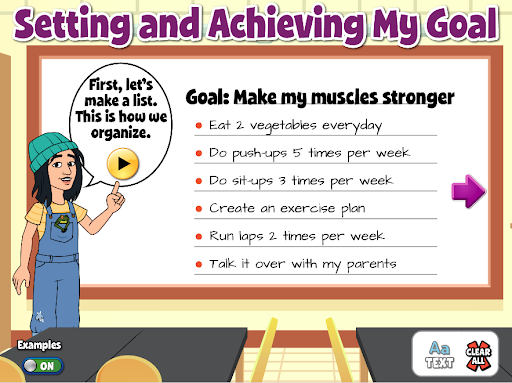Set Goals to Move
By Susannah Kvasnicka
***
It is never too early to show children the importance and rewards of working individually, especially when it comes to physical activity. When children participate in individual sports and exercise they compete with themselves and are focused on being the best they can be.
Goal setting, self-discipline, and accountability are all critical components of self-guided exercise. QuaverHealth has incorporated these principles into our lessons as we know learning these life skills early can help ensure a child’s success through childhood and into adulthood.

The First Step
When starting a physical activity or exercise program, I always suggest starting by writing down your goals. Would you like to perfect your ballet moves? Walk a mile? Add resistance training to your seated exercises? Set goals to cross the finish line!
Depending on the age or development of the child, this step may require help from a parent or teacher. I like to set challenging, yet attainable goals. Once I have established my goal, I then decide how I will achieve it.
When I was training and racing competitively I would normally have two main goals per year based on the seasons. I would have smaller goals or milestones throughout my training to provide me feedback on whether or not I was on track to meet the goal.
For example, when I wanted to qualify for the 2008 Olympic Trials Marathon I first selected a marathon in which I was going to compete. I knew I had to run under 2 hours and 46 minutes in order to qualify. Taking into account my fitness level at that time I determined what it would require for me to be able to hit my target pace of 6:15 per mile for 26.2 miles.
I considered how long it would take me to train to meet that goal, what the training would look like and how I could track my progress. At the peak of my training this meant running twice a day most days and hitting 120 miles per week.This type of training was over a period of over three months.
Measuring my progress was a combination of the workouts I was able to perform and also the races I ran while in training. Tracking your progress enables you to see whether or not you are likely to meet your goal. Sometimes you will learn you are not. When that happens I suggest you either adjust your training or depending on timing, adjust your goal.
While my goal setting and performance was at a very high level the same principles can be applied to children. Let’s say a child wants to work up to walking a full mile. Set a reasonable time frame depending on the child’s starting point. Perhaps the child begins by walking 5 minutes every other day for a week, then builds to 10 minutes, etc. The child can track their progress by writing down what activity they did for the day. This can be on a calendar or by simply logging the activity in a spiral notebook.
For younger children, the goals don’t have to be too ambitious or as specific. The goal could be to exercise or play outside for 20 minutes 5 days a week. If you have a child with mobility limitations, maybe they could use a resistance band while seated. Allow the child to put a sticker on the calendar for each day they have participated in their chosen activity. The main points are to set a goal, to be active, track your progress, and hold yourself accountable for your actions.

Track Goal Achievement
Writing down or tracking your activity leading into your goal will not only show progress but will serve as a motivator.
As someone who has logged my running on a daily basis for over 20 years, I know that being able to see what you have done gives you confidence, pride, and motivation to continue moving forward. Seeing your hard work on paper helps boost your self-esteem which will likely inspire you to persevere in achieving your goals despite any troubles along the way.
QuaverHealth provides an online journal that encourages students to record daily exercise in addition to tracking other healthy habits such as hydration and sleep which all contribute to a healthy mind and body.
Looking to start moving?
Walking is one of the simplest and healthiest forms of individual sport or exercise. It is also an exercise most children can do. If your child prefers they can also skip rope, do jumping jacks, pushups or simply throw a ball against a wall (preferably an exterior wall without windows). In fact, one of the greatest things about individual sports or exercise is that in most cases, you need very little equipment, and you can do them almost anywhere. This allows for greater accessibility for all children.
Accessibility for all children is especially important because team sports can be expensive! Between registration fees, equipment, and team parties, many parents struggle to afford these types of activities. Just as a child’s athletic abilities shouldn’t dictate whether or not they should participate in sport or exercise, neither should a parent’s ability to pay. Being active does not have to be expensive.
Another benefit to learning how to exercise independently is that you only need yourself to participate. As we know, COVID has caused many children to be out of school for long periods. Many school sports, as well as other club sports, have either been postponed or canceled. We all need to learn ways to move when we don’t have access to fields, gymnasiums, equipment, and teammates.
Start Exercising!
Whether it’s practicing ballet moves, resistance training while seated, or getting outside with their family every Saturday morning for a walk, children benefit from all kinds of exercise. At QuaverHealth, we strive for all children to develop healthy habits early. Learning how to set goals, motivate yourself, and practice self-discipline are lifelong skills we want all children to have.
There’s no reason why movement, exercise, and outdoor activity shouldn’t also be Seriously Fun. Set a goal to try a walk, a skip, a dance, or a game of catch with your children today!
Before joining QuaverEd Susannah Kvasnicka spent 15 years competing as a marathon runner at the National level. Most notably, Susannah won the 2005 Marine Corps Marathon, the 2006 Steamtown Marathon and qualified for the 2008 Olympic Trials Marathon. In addition to competing, Susannah has coached and mentored high school and college runners some of which were Virginia State Champions. She credits her success to her ability to set goals, practice self-discipline, and perseverance through challenging times.
